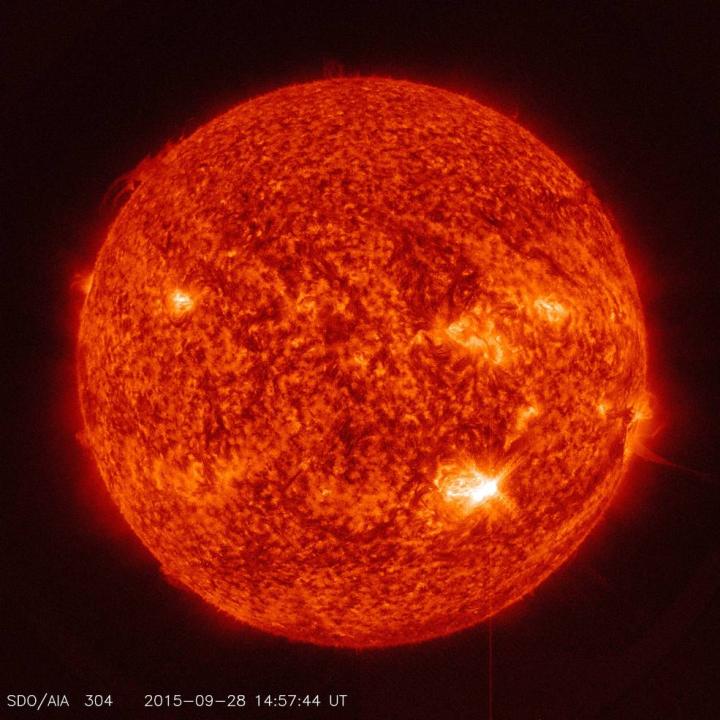

NASA's Solar Dynamics Observatory captured this image of a solar flare -- as seen in the bright flash in the lower right hand side of the sun -- on Sept. 28, 2015. The image shows a subset of extreme ultraviolet light that highlights the extraordinarily hot material in flares and which is typically colorized in red.
Credits: NASA/SDO
Solar flares are powerful bursts of radiation. Harmful radiation from a flare cannot pass through Earth's atmosphere to physically affect humans on the ground, however — when intense enough — they can disturb the atmosphere in the layer where GPS and communications signals travel.
To see how this event may affect Earth, please visit NOAA's Space Weather Prediction Center at http://spaceweather.
This flare is classified as an M7.6 flare. M-class flares are a tenth the size of the most intense flares, the X-class flares. The number provides more information about its strength. An M2 is twice as intense as an M1, an M3 is three times as intense, etc.
Updates will be provided as needed.












